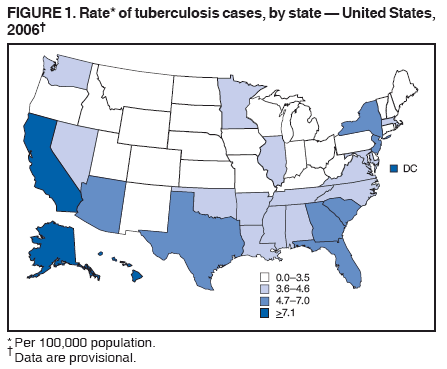I went to a charity function today where the organization was asking to fund English & Spanish public service announcements to be aired across Texas to inform the public about the dangers of tuberculosis (TB).
The one I'm funding is private, but if you are interested in a good one donate to: http://www.stoptb.org.
TB Facts
This is one of the costs of an porous border that is often overlooked. Please discuss.
The one I'm funding is private, but if you are interested in a good one donate to: http://www.stoptb.org.
TB Facts
- TB has been in the top three infectious disease forever. It's top 3 in 2006 as well. For convenience it's #2 in 2004: http://www.who.int/whr/2004/annex/topic … x_2_en.pdf I'm too lazy to find something more current.
- TB causes 2 million deaths a year. http://www.infoplease.com/cig/dangerous … losis.html
- Each infected person will infect 10-15 more people per year, and 1/3 of the world is currently infected http://www.who.int/mediacentre/factsheets/fs104/en/
- Transmission is airborne. Basically everytime you breathe in air around an infected person, you have a chance of getting infected.
- If you are in perfect health the chance of infection is less likely than if you don't have a good diet, fitness, immune system, and cleanliness.
- TB is a top killer for HIV cases because of an immune system problem. (These deaths are counted as HIV deaths by the WHO).
- No vaccine exists
- Once someone tests positive, the doctors test the family and friends of the person to see if they were infected. So in a sense, one person is sick, which means up to 100 people more are tested.
- Treatment is based on taking drugs. The drugs are taken for six to nine months.
- However, after one month the patient feels well enough that most people stop taking the medicine. But they relapse after many months, while in the meantime they are still spreading the disease.
- To counter patients from not taking the drugs, doctors now use a DOTS system - where the patient has someone watch them take the medicine. If you want the source - its in a few of the websites I've linked to.
- According to the database of the World Health Organization (just choose Mexico & the US to check):http://www.who.int/globalatlas/predefin … /index.aspMexico: 23 cases per 100,000 in 2005, 2.1 deaths per 100,000 in 2005, 10% infected dieUSA: 4.5 cases per 100,000 in 2005, 0.5 deaths per 100,000 in 2005, 10% of infected die
- Here's a CDC article of TB cases by state. It does talk a little about the link of TB and illegal immigration.http://www.cdc.gov/mmwr/preview/mmwrhtml/mm5611a2.htmHere's the map:

- If you have this disease and are migrating from point A to point B, everyone you come in contact with has the chance of being infected. A large percentage of the population doesn't have to worry about this, because they are in good health, have a good diet, etc etc etc. However, this doesn't prevent you from having a problem - like for instance catching TB at the tail end of battling another illness. If you get it, you have a 10% chance of dying, even if treated.
- Illegal immigrants who have this disease are not likely to seek treatment until they are very, very sick, for fear of being caught. During the period in which they are sick, they probably have infected their family to repeat the process.
- The cost of the medicine is probably moderate to expensive. Which means that unless DOTS is being used, the patient is likely to stop taking the medicine after one month because they feel better. Basically they bought time for a relapse, while they continue to infect others.
- DOTS has been extremely effective, it is the reason why the number of cases/deaths have dropped significantly in recent years.
- Donate some money to this cause. If someone gets TB, the medical bill includes the drugs, the doctor, and testing up to 100 friends and family members who have contact with the infected.
This is one of the costs of an porous border that is often overlooked. Please discuss.